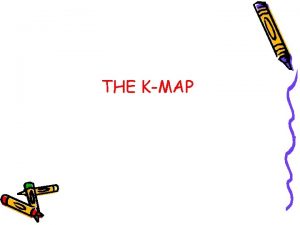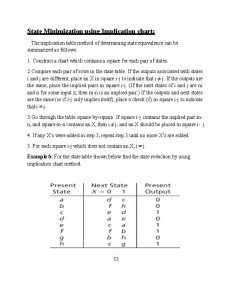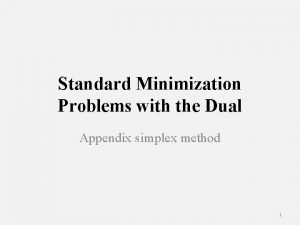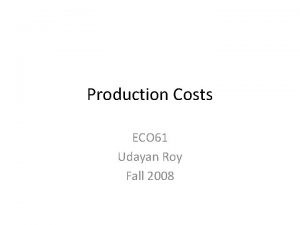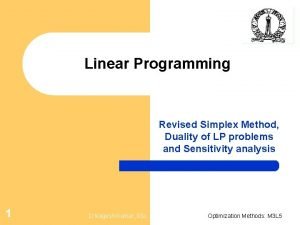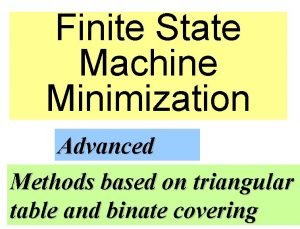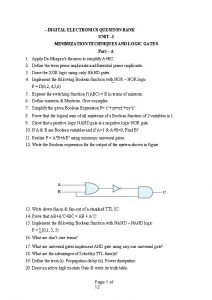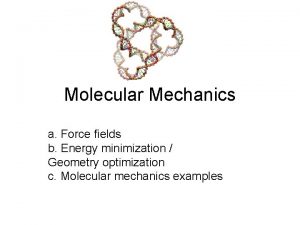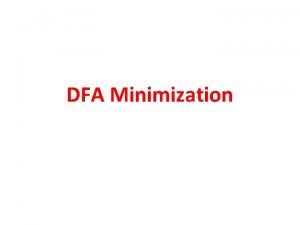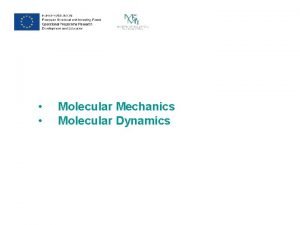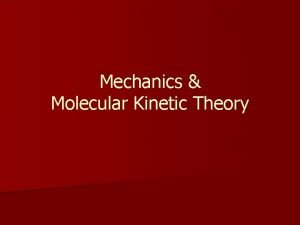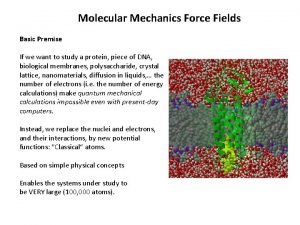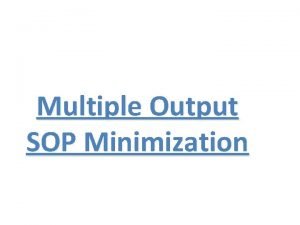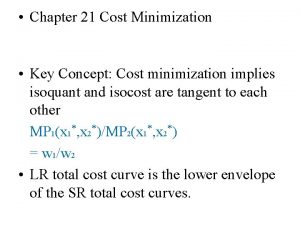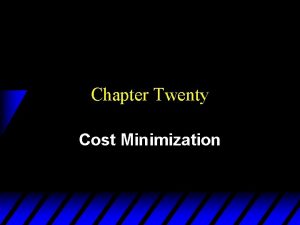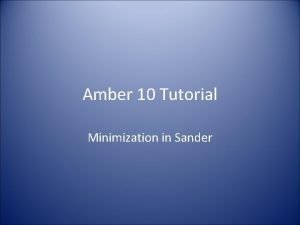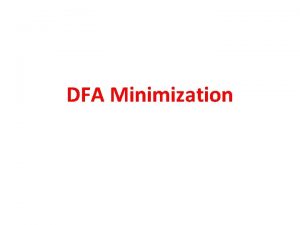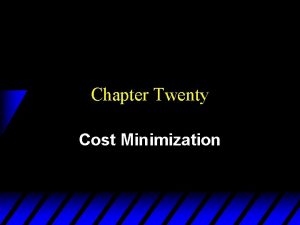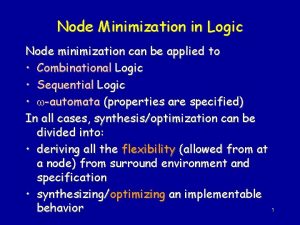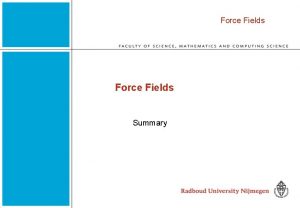Molecular Mechanics force fields minimization Force Fields good
















- Slides: 16

Molecular Mechanics • force fields • minimization

Force Fields • good review: Mac. Kerell (2004) JComp. Chem, 25: 1584 • FF typically contains terms for: – bonds and angles: harmonic/sigmoidal restraints – non-bonded: • electrostatics: Coulomb term • VDW: 12 -6 Lennard-Jones • example - CHARMM FF:

Bond stretching and bending • harmonic restraints around equilibrium distance – Hooke’s Law – frequency from spring constant • are bonds really like springs (quadratic)? Morse potential

Angle Restraints • 3 -atom angles: harmonic constraint • torsion angles (4 -atoms) – alkyl: sp 3, tetrahedral, gauche – alkenyl: sp 2, double-bonds, planar – “improper” dihedrals (restrain planar centers: Phe, peptide bond) • can add cross terms for dependence of angle on adjacent bonds and angles. . .

Electrostatic terms • Coulomb term • dielectric: evacuum=1 ; ewater=80; e=2 -4 in protein interior • dipole moments vs. atom-centered partial charges? • H-bonds: explicit or implicit (electrostatic)? for HCl---HCl

Partial Charges • • formal charges: 0, ± 1 electronegativity, induction QM: solve wave equations, integrate orbital density (ESP) Mulliken charges – linear combination of molecular orbitals – tends to exaggerate charge separation • Gasteiger charges (Gasteiger and Marsili, 1980) – iterative: redistribution of charges based on electronegativity contribution to the atomic charge on the a-th step of iteration of charge; j are neighbors with higher electroneg. ; k are less-electronegative neighbors electronegativity of v’th orbital on atom i I: ionization potentials, E: electron affinities, 0=neutral atoms, +=positive ions


Hydrogen Bonds • Directional Hydrogen Bonding in the MM 3 Force Field (Lii and Allinger, 1994, 1998) – e. HB is proportional to the difference of the first ionization potential between the hydrogen acceptor Y and the donor X, and also the bond moment of bond X-H – comparison with MP 2 -level ab initio calculations with 6 -31 G** basis set for predicting bond lengths etc. in organic molecules • CHARMM – non-directional, electrostatic approximation

Common FF Parameterizations • all-atom vs. united atom (only polar H’s) • parameterize on small organic molecules – acetamide, cyclohexane. . . – predict vibrational spectra, melting temperatures, conformational/solvation energies. . . • • • AMBER (Cornell 1995) OPLS (Jorgensen) Optimized Potential for Liquid Simulations MM 3 (Allinger et al. , 1989) MMFF 94 (Merck) (Halgren, 1996) Charmm (Karplus) NAMD, Gromos, ECEPP, CFF. . .

Implicit-solvent: solvation parameters • add terms (with derivatives) to energy function • accessible surface area • EFF 1 (Lazaridis and Karplus, 1999) – for atom i, consider solvent-excluded volumes of atoms j around it, as function of contact distance – benefit for hydrophobic atoms, penalty for polar atoms • Generalized Born – scale electrostatic interactions based on “effective radius” of atom, which depends on depth of burial in protein (integrate over shape of surface) – (more later)

extended issues • QM/MM • polarizability: – cation-p, lone-pairs on sulfur – extra term in AMBER force field (see manual): • handling metal cations – coordination geometry, charge-transfer – Edelman and Sobolev (motifs, induced fit)

Minimization • 3 N degrees of freedom, vector x=<xi> • at minima, derivative equals 0: E=d. E/dx=0 • steepest descent – calculate gradient E with respect to each parameter – take small step in opposite direction • how hard is it to calculate derivatives of force fields with respect to atomic coordinates? E=Sbonds w(b-b 0)2 =w S (((xi-xj)2+(yi-yj)2+(zi-zj)2)1/2+b 0)2 d. E/dxi=. . .

Conjugate Gradient Initialize at P 0; g 0 = h 0 = F(P 0); for i = 0 to n-1 Pi+1 : = minimum of F along the line hi through Pi, i. e. , choose li to minimize F(Pi+1)=F(Pi+ li hi); g i+1 : = F(Pi+1); gi+1 : = (gi+1 - gi) gi+1 / gi gi; hi+1: = gi+1+gi hi; • orthogonal directions • line search • convergence, n steps • powell

Newton-Raphson iteration • method for finding zero’s of f(x) – square roots: x 2 -5=0 -> x=sqrt(5) • extend to finding zero’s of f’(x) • second order method: Hessian

BFGS • Broyden-Fletcher, Goldfarb, Shanno • lbfgs minimizer (limited memory) in Phenix (python) • second order, but avoids computing inverse of Hessian, which takes O((3 N)3) time • approximation: Bg = H-1 g • algorithm: – solve for sk – perform line search for optimal ak – calculate yk – update B

Simulated Annealing • Li and Scherga (1987) – Monte Carlo method • advantage: don’t have to compute derivatives • make a “random” move, i. e. change some coords of atoms – accept change if energy decreases – accept probabilistically if energy increases – acceptance probability depends on temperature • allows exploration of energy landscape – can get out of some local minima – higher temperatures allows more exploration – cooling forces search to proceed downhill • atomic coordinates or torsion angles? – treat bond lengths as effectively fixed – rotation couples movements of sub-structures • higher “radius of convergence” – Brunger, Adams, and Rice (1997)
 Red fields
Red fields Covalently bonded substances
Covalently bonded substances Ionic covalent metallic
Ionic covalent metallic Zinc oxide + nitric acid → zinc nitrate + water
Zinc oxide + nitric acid → zinc nitrate + water Zoroastrianism good thoughts good deeds
Zoroastrianism good thoughts good deeds Good afternoon
Good afternoon Good afternoon teacher
Good afternoon teacher You are good when theres nothing good in me
You are good when theres nothing good in me Good evening students
Good evening students Karnaugh map pos minimization
Karnaugh map pos minimization Implications table
Implications table Simplex minimization problem
Simplex minimization problem Expected risk minimization
Expected risk minimization Cost minimization formula
Cost minimization formula Simplex method
Simplex method Finite state machine minimization
Finite state machine minimization Minimization techniques in digital electronics
Minimization techniques in digital electronics









